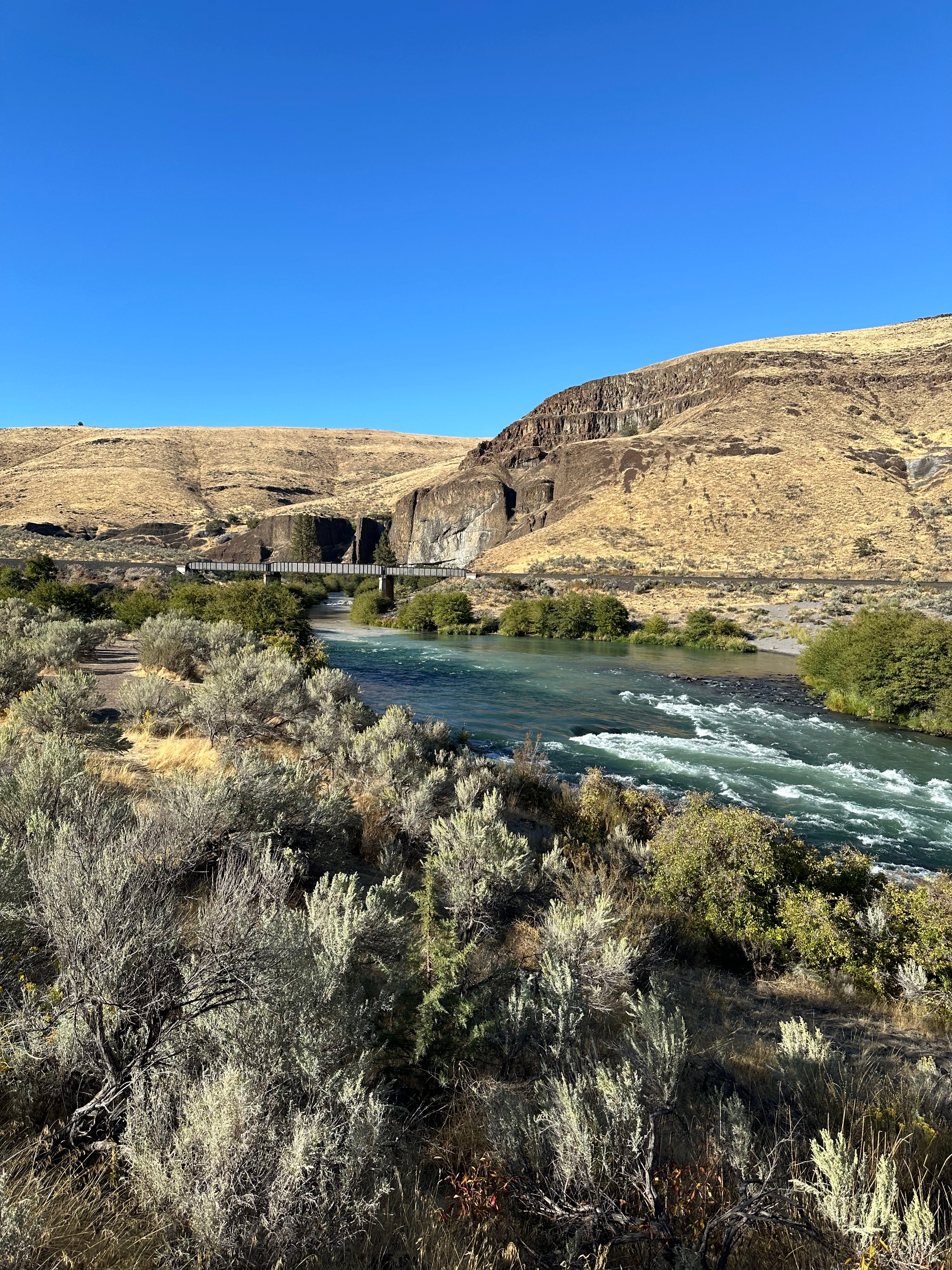White River? No Worries!

After some heavy rain on Mt Hood on Wednesday night, the White River puked just a little bit and then came right back into shape. John was on the river when the puke happened and he said it was very short lived and they never stopped fishing the floating line - no tips needed to hook steelhead.
We got a call in the shop from someone who was very angry and freaked out about having to move his camp from the lower river. We assured him that a blow out can clear up in mere hours, but he angrily told us we didn't know what we were talking about and that this was NOT going to clear for DAYS.
I drove down to look at the mouth of the White River at about 4:15 yesterday (Thursday) afternoon and I saw this:

The White River is 100% BLOWN OUT. However, we are not concerned with how fishable the White River is, we are just concerned about the impact that the White River is having on the Deschutes and if it is going to ruin our weekend plans of fishing the waters from Sherar's Falls to the mouth.
The good news is that the White River does not currently have enough volume to negatively impact the fishing in the lower 40 miles of river. It is putting a tiny tinge of color in the water, but not enough to make an angler modify his/her technique or to necessitate fishing with larger flies. At these flows, the White River is harmless. The peak flow of the White River this week was 113 CFS (cubic feet per second) and it has now dropped closer to 100 CFS.
Steelhead fishing was a lot more challenging for people this week - we did see and hear of many steelhead being caught, but it wasn't quite as "gangbusters" as we had seen it earlier this year. A good buddy of ours floated to the mouth over four days and hooked all his steelhead on a steelhead caddis - which is a dry fly which is skated on the surface.
The steelhead are spread out now all throughout the river. There will always be more fish in the lower half (north of Maupin) of the river than in the upper half (south of Maupin), however, there are enough steelhead in the upper half of the river to keep things interesting.
Floating lines and small wet flies or skaters are continuing to be the favorite method for most of the guides with whom I have chatted. By fishing near the surface you won't get hung up in the rocks; you will have harder, more aggressive grabs; and you usually get to see the boil or splash as the steelhead engulfs your fly.
As for trout fishing, it remains good. The aquatic moths are slowly going away, and the caddis are coming on strong. This is the time of year when we start to see the really large caddis, scientifically known as Dicosmoecus, commonly known as the October Caddis. Anglers get a lot more excited about this than the trout do, unfortunately. This is not the second coming of the salmonfly hatch - the October caddis are nocturnal emergers and are not incredibly appealing or available to trout. The pupa might be effective at last light, swinging it as you would any other caddis pupa, the trout might hit it.
Steelhead are going to notice the October caddis in the river. This is the time of year that I like to fish flies that have a natural brown color and or some burnt orange. A Lady Caroline, a Mack's Canyon, Tiny Dancer, or any natural fly like those would be a good choice for swinging. Water temps are ideal and the air temps are starting to get into the 70s in the coming days - a nice cool down is coming!
See you on the river!











hzb00p
nesdkl
wv9hit
g67fys
kxtwt4